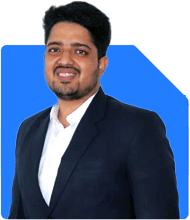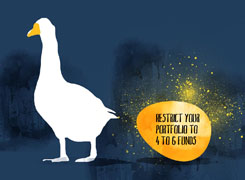Sanjeev Govila | Answer |Ask -Follow
Financial Planner - Answered on Jun 15, 2023
He has over 12 years of experience in financial planning and is a SEBI certified registered investment advisor; he is also accredited with AMFI and IRDA.... more

Hi Sir I am 34 years old earning aroung 70k/m 16 k savings /month Could you please review my MF portfolio should i make any changes ET money high growth 5k/m started this year DSP Tax saver- started May 2017 3k/m CanRob Tax saver Jan 2021 2k/m quant tax PPFFAS Flexi Started Jan 2021- 2k/m DSP small - lumpsum 160000 DSP quant - lumpsum 105000 Quant small cap 1k/m Motilal Oswal Nasdag 100 FOF 1k/m Motilal Oswal Midcap 1k/m started this year PGIM India Midcap Opportunities Fund Direct-Growth 1k/m started this year SBI Bluechip lumpsum 10000 UTI Mid - July2021 1k/m Stopped DSP Mid - July 2021 1k/m Stopped UTI Flexi - July2021 1k/m stopped PPF 500/m i am planning to stop CanRob Tax saver and start Quant Tax Plan Direct-Growth and start below MFs as well SBI Contra Direct Plan-Growth Mirae Asset NYSE FANG+ ETF FoF Direct - Growth
1. You have over diversified your portfolio by investing in so many funds. There seems to be a lot of overlapping in your portfolio. Ultimately equity funds invest in stocks and if your funds are investing in similar stocks, you are not achieving any diversification which you may think you are doing.
2. You also hold multiple ELSS fund which are used for tax benefit purpose and come with lock in for 3 years. If you are solely investing under this for the tax saving then we suggest you to have only one good fund.
Regarding your funds:-
1. DSP Tax Saver Fund, Canara Robeco Tax Saver Fund and Quant Tax plan: These funds have a decent track record in their category. Having one tax saver fund is enough.
2. Parag Parikh Flexi Cap Fund: The scheme is not bound by any market capitalisation. It also has the freedom to invest in stocks listed overseas. Therefore, I would suggest you to continue with this fund.
4. DSP Small Cap & Quant Small Cap : The lump sum investment in this fund indicates a concentrated bet on small-cap stocks. Small-cap funds can be volatile, but they also offer growth potential. Monitor its performance closely and be prepared for potential fluctuations in returns. We recommend you to hold one fund in this category to get the exposure of small cap which is risky in nature as compared to large & mid cap category.
5. DSP Quant Fund: Similar to DSP Small Cap, this fund focuses on quant-based strategies based on macro and micro factors. Evaluate its performance and consider your risk tolerance before making any decisions.
7. Motilal Oswal Nasdaq 100 FOF: The fund invests in international companies and sectors that helps in eliminating the concentration risk. Continue with this fund.
8. Motilal Oswal Midcap, UTI Mid Cap fund, DSP Mid Cap Fund and PGIM India Midcap Opportunities Fund: I recommend you to hold just one fund in this category to get the exposure of mid cap which is risky in nature as compared to large cap category.
9. SBI Bluechip Fund: This lump sum investment in a large-cap fund can provide stability to your portfolio. Continue with it and continue monitoring its performance relative to its benchmark.
10. UTI Flexi Cap Fund: Similar to DSP Mid, assess its performance and alignment with your investment goals, especially since you've stopped investing in it. I recommend you to redeem from this fund once the exit load period is over.
11. PPF: Contributing to PPF is a good long-term savings option due to its tax benefits and guaranteed returns. It's wise to continue investing in it unless you have specific financial goals or liquidity needs but if you have a goal of your retirement then we would suggest you to invest in NPS (National Pension Scheme) instead of this.
Regarding your plan to add SBI Contra and Mirae Asset NYSE FANG+ ETF FoF, it's important to evaluate these funds based on their historical performance, expense ratios, and risk factors. Make sure they align with your investment strategy and risk tolerance before adding them to your portfolio.
I do not recommend you to add more funds in your portfolio as you already have too many funds which you need to cut down on.
Disclaimer:
• I have just no idea about your age, future financial goals, your risk profile, other investments and whether you would have the nerves to not get unduly perturbed if stock markets go temporarily down.
• Hence, please note that I am answering your question in absolute isolation to other parameters which should definitely be considered when answering a question of this type.
• I recommend you to also consult a good financial advisor who would look at your complete profile in totality before you act on this advice given by me.
You may like to see similar questions and answers below
Nikunj Saraf | Answer |Ask -Follow
Mutual Funds Expert - Answered on May 22, 2023
Ramalingam Kalirajan |10893 Answers |Ask -Follow
Mutual Funds, Financial Planning Expert - Answered on May 29, 2024
Ramalingam Kalirajan |10893 Answers |Ask -Follow
Mutual Funds, Financial Planning Expert - Answered on Apr 12, 2024
Ramalingam Kalirajan |10893 Answers |Ask -Follow
Mutual Funds, Financial Planning Expert - Answered on May 08, 2024
Ramalingam Kalirajan |10893 Answers |Ask -Follow
Mutual Funds, Financial Planning Expert - Answered on Dec 15, 2025
Ramalingam Kalirajan |10893 Answers |Ask -Follow
Mutual Funds, Financial Planning Expert - Answered on Dec 15, 2025
Radheshyam Zanwar |6746 Answers |Ask -Follow
MHT-CET, IIT-JEE, NEET-UG Expert - Answered on Dec 15, 2025
Ramalingam Kalirajan |10893 Answers |Ask -Follow
Mutual Funds, Financial Planning Expert - Answered on Dec 15, 2025
Ramalingam Kalirajan |10893 Answers |Ask -Follow
Mutual Funds, Financial Planning Expert - Answered on Dec 15, 2025
Ramalingam Kalirajan |10893 Answers |Ask -Follow
Mutual Funds, Financial Planning Expert - Answered on Dec 15, 2025
Samraat Jadhav |2508 Answers |Ask -Follow
Stock Market Expert - Answered on Dec 15, 2025
Ramalingam Kalirajan |10893 Answers |Ask -Follow
Mutual Funds, Financial Planning Expert - Answered on Dec 15, 2025
Reetika Sharma |425 Answers |Ask -Follow
Financial Planner, MF and Insurance Expert - Answered on Dec 15, 2025
Radheshyam Zanwar |6746 Answers |Ask -Follow
MHT-CET, IIT-JEE, NEET-UG Expert - Answered on Dec 15, 2025


























